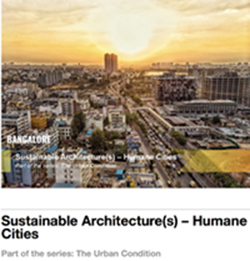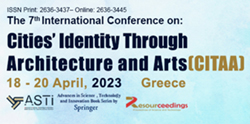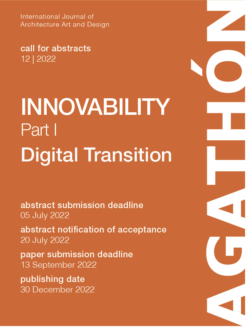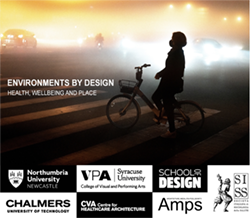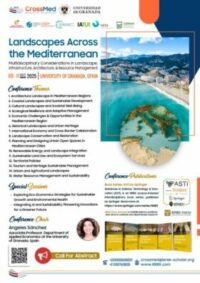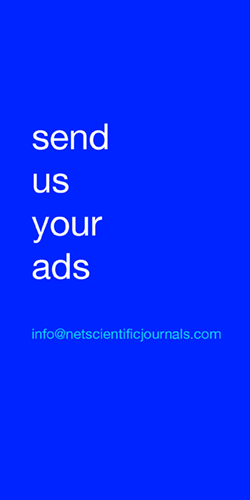ISSN (print): 2240-7391
ISSN (online): 2239-0243
May
2020
Jun
2020
Oct
2020
Nov
2020
Apr
2021
The complexity of the current scenario has radically changed the culture of the project and consequently the planning, construction and management of the built environment. Technological progress has entered forcefully into the architectural context, generating unforeseen effects of high anthropic, social and economic impact, which enrich each other by proposing new fields of research. This makes it crucial to work on the frontiers of knowledge and their hybridization, as a privileged way to develop processes, technologies and materials capable of responding to the changing and rapid demands of contemporary society. But what exactly do “hybrid knowledge” consist in? What relationships govern the meeting between human sciences and exact sciences and what are the legitimation criteria to which the fruits of hybridization in architecture tend, which has always been a border discipline? Countless the examples. Certainly the main forms of hybridization concern the encounter between the humanities and design, which over time has given rise to new and original founding theories; secondly, information technology and the immaterial world, which have expanded the designer’s technical and cognitive tools; to reach the exact sciences and, again, biology, whose processes are inspired by many as a model of complexity, perfection, harmonious organicity; up to the consolidated exchanges with sociology and psychology, to which the explorations of neuroscience in support of the architectural project have recently been added. “Unifying the production moment and inventive innovation […] cannot be reduced to the only application of conventional techniques. Design presupposes a technique that is carried out by staging the imagination” (Vittoria, 1995). Science and literature, computer science and poetry, algorithms and philology, represent these “hybrid knowledge”. Tim Ingold, an anthropologist careful to techniques, talks about a new transdisciplinary map, capable of embracing reality by observing it with theoretical lenses and analysis methods conceived separately, but such as to integrate the various points of view available, the only possibility of knowledge today. Luciano Floridi, a contemporary philosopher, talks about the need for a ‘semantic capital’, as a store of knowledge that allows us to interface with the new tools that we use every day and that continually require us to adapt technically but, precisely, also semantically. In this scenario, the architectural project and its culture represent a privileged place of intersection of new and ancient knowledge, of traditional techniques and digital methods, of transfers and inspirations coming increasingly from other sectors capable of helping us to imagine the future. The architectural project must be practiced in order to elect it as a medium among the various disciplines that study the boundary conditions in which this activity fits (cultural, social, environmental) and the intrinsic conditions that architecture must achieve (spatial requirements and technological performance increasingly complex). With reference to this assumption, which outlines a specific theme of the culture of architecture technology, Techne 21 will publish: the results of research and experiments, which feed knowledge of the theme with documented evidence, correctly found and treated applying appropriate methodologies; essays, which bring significant and original elements of enrichment of the ongoing debate. To this end, the theme of “hybridization of knowledge” and “heteronomy of architecture” seems to open up to at least four areas of interest and deepening.
1) Approaches aimed at achieving an integrated/heteronomous project. The concept of technological design, traditionally placed between a creative phase of ideation and a material construction of a work, is found in the perspective of a new continuum, radically modified. This no longer allows separate views of the various phases that characterize it, but presupposes a complex and integrated system of actions and operators located spatially and temporally in the different phases of the building process. “[…] the design is not, or should not be, an exclusively technical activity, under penalty of losing any innovative scope” (Torricelli, 2011).
2. Research aimed at identifying tools to promote relationships between the different professionals in the construction process: actors, figures, protagonists. New social conditions and environmental challenges require responses to the project disciplines, which must be able to simultaneously meet formal, functional and technological requirements. The theme of the hybridization of knowledge takes place on several levels: through horizontal integration, between different subjects engaged in the same phase of the process, and vertical integration aimed at enriching the development of a project.
3. Identification of the architect’s skills, in order to establish new synergies between different knowledge. The designer, thanks to the knowledge available, can practice at different levels of the project, operating in multidisciplinary contexts according to his skills and experiences (from construction technology to management, from territorial planning to information/communication, from the object scale to the environmental project), finding a crucial role of direction and integration.
4. Promotion of the architectural project as an interdisciplinary synthesis tool. Architecture and its project are elected to disciplinary areas capable of materializing the demands of a society in constant and rapid evolution. The degree of quality and topicality of the design action increasingly derives from its characteristic of opening up to contamination also in typological, morphological and technological terms, while always within a rigorous approach capable of legitimizing the choices made. A world of non-self-referential architecture, but ready to welcome the heterogeneity of knowledge, also requires a cultured review of the status of the project.
The aim of the call is to debate on boundaries, objectives, tools of a proactive action, indispensable for an updated vision of the future. A sort of research of the Orthodoxy of heterodoxy, as well expressed by Ernesto Nathan Rogers in his editorial in Casabella-Continuità number 216 of 1957 where he analyzes the Italian research of the next generation.
Heteronomy of Architecture between hybridization and contamination of knowledge
The complexity of the current scenario has radically changed the culture of the project and consequently the planning, construction and management of the built environment. Technological progress has entered forcefully into the architectural context, generating unforeseen effects of high anthropic, social and economic impact, which enrich each other by proposing new fields of research. This makes it crucial to work on the frontiers of knowledge and their hybridization, as a privileged way to develop processes, technologies and materials capable of responding to the changing and rapid demands of contemporary society. But what exactly do “hybrid knowledge” consist in? What relationships govern the meeting between human sciences and exact sciences and what are the legitimation criteria to which the fruits of hybridization in architecture tend, which has always been a border discipline? Countless the examples. Certainly the main forms of hybridization concern the encounter between the humanities and design, which over time has given rise to new and original founding theories; secondly, information technology and the immaterial world, which have expanded the designer’s technical and cognitive tools; to reach the exact sciences and, again, biology, whose processes are inspired by many as a model of complexity, perfection, harmonious organicity; up to the consolidated exchanges with sociology and psychology, to which the explorations of neuroscience in support of the architectural project have recently been added. “Unifying the production moment and inventive innovation […] cannot be reduced to the only application of conventional techniques. Design presupposes a technique that is carried out by staging the imagination” (Vittoria, 1995). Science and literature, computer science and poetry, algorithms and philology, represent these “hybrid knowledge”. Tim Ingold, an anthropologist careful to techniques, talks about a new transdisciplinary map, capable of embracing reality by observing it with theoretical lenses and analysis methods conceived separately, but such as to integrate the various points of view available, the only possibility of knowledge today. Luciano Floridi, a contemporary philosopher, talks about the need for a ‘semantic capital’, as a store of knowledge that allows us to interface with the new tools that we use every day and that continually require us to adapt technically but, precisely, also semantically. In this scenario, the architectural project and its culture represent a privileged place of intersection of new and ancient knowledge, of traditional techniques and digital methods, of transfers and inspirations coming increasingly from other sectors capable of helping us to imagine the future. The architectural project must be practiced in order to elect it as a medium among the various disciplines that study the boundary conditions in which this activity fits (cultural, social, environmental) and the intrinsic conditions that architecture must achieve (spatial requirements and technological performance increasingly complex). With reference to this assumption, which outlines a specific theme of the culture of architecture technology, Techne 21 will publish: the results of research and experiments, which feed knowledge of the theme with documented evidence, correctly found and treated applying appropriate methodologies; essays, which bring significant and original elements of enrichment of the ongoing debate. To this end, the theme of “hybridization of knowledge” and “heteronomy of architecture” seems to open up to at least four areas of interest and deepening.
1) Approaches aimed at achieving an integrated/heteronomous project. The concept of technological design, traditionally placed between a creative phase of ideation and a material construction of a work, is found in the perspective of a new continuum, radically modified. This no longer allows separate views of the various phases that characterize it, but presupposes a complex and integrated system of actions and operators located spatially and temporally in the different phases of the building process. “[…] the design is not, or should not be, an exclusively technical activity, under penalty of losing any innovative scope” (Torricelli, 2011).
2. Research aimed at identifying tools to promote relationships between the different professionals in the construction process: actors, figures, protagonists. New social conditions and environmental challenges require responses to the project disciplines, which must be able to simultaneously meet formal, functional and technological requirements. The theme of the hybridization of knowledge takes place on several levels: through horizontal integration, between different subjects engaged in the same phase of the process, and vertical integration aimed at enriching the development of a project.
3. Identification of the architect’s skills, in order to establish new synergies between different knowledge. The designer, thanks to the knowledge available, can practice at different levels of the project, operating in multidisciplinary contexts according to his skills and experiences (from construction technology to management, from territorial planning to information/communication, from the object scale to the environmental project), finding a crucial role of direction and integration.
4. Promotion of the architectural project as an interdisciplinary synthesis tool. Architecture and its project are elected to disciplinary areas capable of materializing the demands of a society in constant and rapid evolution. The degree of quality and topicality of the design action increasingly derives from its characteristic of opening up to contamination also in typological, morphological and technological terms, while always within a rigorous approach capable of legitimizing the choices made. A world of non-self-referential architecture, but ready to welcome the heterogeneity of knowledge, also requires a cultured review of the status of the project.
The aim of the call is to debate on boundaries, objectives, tools of a proactive action, indispensable for an updated vision of the future. A sort of research of the Orthodoxy of heterodoxy, as well expressed by Ernesto Nathan Rogers in his editorial in Casabella-Continuità number 216 of 1957 where he analyzes the Italian research of the next generation.
Ape Journal, ANVUR, BASE, DOAJ, EBSCO, ESCI, EZB, Google Scholar, JournalTOCs, Jurn, NewJour, PLEIADI, Proquest,
Scopus, Searchteam, ULRICHSWeb.
In order to cover the management costs of the Journal and of the publication process through a peer-review procedure, the Journal uses a form of conditional submission fee referred to as Article Processing Charge (APC). The fee is only requested if the article is accepted for publication in this Journal after peer-review and possible revision of the manuscript. Note that many national and private research funding organizations and universities explicitly cover such fees for articles originated in funded research projects. The publication fee for each article is: euro 200 for SITdA members; euro 280 for the authors who are NOT SITdA members. The contribution has to be paid to SITdA onlus, according to the instructions which will be delivered if the paper is accepted for the publication, a precondition is to fill out the data sheet here attached. A section devoted to papers of advanced search, proposed by researchers under 35, is foreseen: papers (up to 2) which receive and “Excellent” evaluation in the abstract selection and subsequent double blind review, will be published by SITdA with no publication fee.

